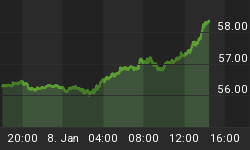Russia‘s U.S. dollar reserves have shrunk from $96.1 billion in March to just $14.9 billion in May, according to the Russian Central Bank. Its governor, Elvira Nabiullina, says the decision will help protect the Russian economy and diversify the bank’s reserves.
Back in March, Russian President Vladimir Putin called the monopoly of the U.S. dollar “not reliable enough and dangerous for many”.
Notably, the Bank of Russia has been buying gold every month since March 2015, overtaking China as the fifth-biggest sovereign holder of gold.
Russia added 500,000 ounces of gold (15.55174 tons) to reserves in June and bought some 106 tons of gold since the start of the year, with total reserves now approaching the 2,000-metric-ton mark. Last year, Russia added a record 224 tons of gold to the reserves.
The U.S. is still the largest owner of metal, followed by Germany--8,134 and 3,374 tons, respectively.
Both political and economic reasons prompted the Russian central bank‘s decision.
First, mindful of geopolitical tensions, the regulator has apprehensions that Russia-owned treasuries can be frozen. Ironically, the recent meeting between Trump and Putin, not only failed to ease tensions, but amped them up, with some American legislators calling for tougher sanctions against Russia.
The Russian central bank hinted that it could invest the money from the USD sale not only into gold, but also into International Monetary Fund (IMF) bonds and Chinese bonds.
Related: Is This The Answer To High Gasoline Prices?
In periods of global financial or political crises, gold is much more useful than securities or cash, although gold is also prone to price fluctuations.
Russia's liquidation of its U.S. Treasury holdings has had an insignificant impact on the dollar, fo far. Instead, it’s China—the world's largest holder of U.S. Treasuries (about $1.2 trillion)--that has the most power to impact the dollar rate and the yield of US bonds.
With Russian experts lauding the central bank‘s decision, some warn however that gold prices could be manipulated on the market like oil.
“In the event of a global decline in the interest of large sovereign investors in US Treasury bonds, an increase in speculative activity in precious metals in order to artificially lower their market valuation can be expected,” a Russian expert told RT.
The upbeat prognosis of Russia‘s gold mining industry also boosts the central bank‘s confidence that buying up gold is the way to go.
Related: China’s Debt Bomb Is Finally Detonating
“Our gold mining industry is very well developed and it is ready to supply gold. That is why our attitude towards here is based upon diversification of our reserves,“ Nabiullina was quoted as saying.
The Russian gold mining industry has almost doubled its volume of extraction over the last two decades and looks forward to registering new records soon.
In 2017, Russia extracted 8.8 million ounces, accounting for 8.3 percent of total global production. The newly discovered gold deposits will reportedly allow miners to increase extraction by half in seven years. By 2030, extraction is expected to grow by nearly eight million ounces. The increase could make Russia the world's second largest producer of the precious metal.
By Linas Jegelevicius for Safehaven.com
More Top Reads From Safehaven.com

















